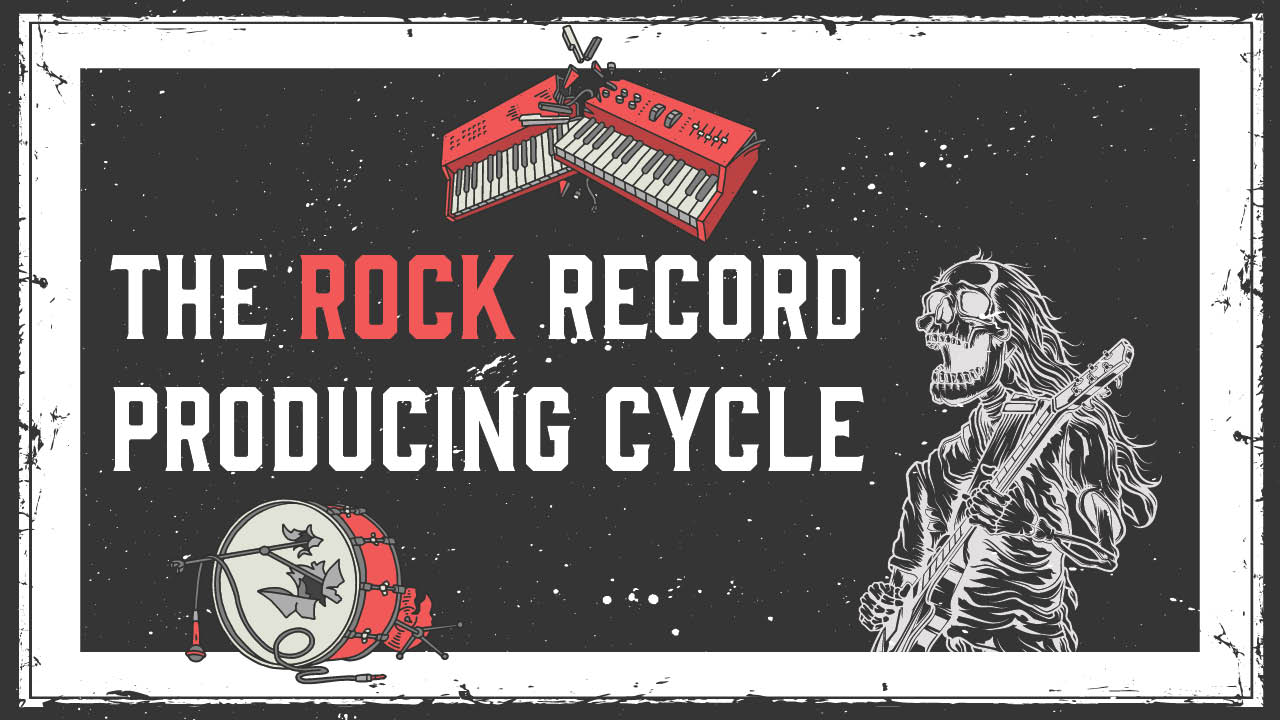The rock record producing cycle
 CREDIT: FSU PUBLICATIONS AND COMMUNICATIONS DEPARTMENT
CREDIT: FSU PUBLICATIONS AND COMMUNICATIONS DEPARTMENTWhen we turn on our music and listen to our favourite bands, we might think to ourselves how the artists compose and produce the music. From writing the lyrics and composing the instrumental pieces to the final stage of polishing the final tape, the process is not commonly known to the average listener.
When recording the instrumentals and vocals, each band has a different approach to the creative process. Not everyone follows the same order when it comes to how they compose a song. Some songs start as just a mere guitar riff or four sentences that then evolve into lyrics.
At the start of the process, bands will always begin by creating what’s called a bed track. A bed track is a single track that contains all instruments and serves as the groove and essence of a song.
Dan Brodbeck, the program coordinator for the music industry arts (MIA) program at Fanshawe, is a music producer who has worked with various artists, all with diverse creative work processes. He gave a glimpse at how it works when recording starts out and how different bands and artists operate in the studio.
“When you’re talking about a rock band, it depends on what the process is,” he said. “You’re talking kind of old school recordings or even modern recordings that are trying to capture something more than old school, but a little bit more organic. We have a bed track, which would be the bass drums, guitar guide, vocal playing at once and try to capture what you can capture to keep the energy up.” Once the band has captured the essence of what they like for the sound of the song, they then move to the next stage where they start individually recording separate tracks, like vocals, guitar, bass. “From that point, when that’s captured properly, sometimes there’s repairs made to those tracks, which would be the same as a bass mistake, you punch in, fix it and move on. Then when you’re done with those bad tracks, the next would be overdub sessions, which is then individual people are working on guitar parts, vocal parts on top of that, pre-recorded that track,” Brodbeck explained.
It’s a very long and difficult process for both the producer and the artists, as they’re doing this for multiple songs. They sort through each song individually and spend lots of time deciding what they like and don’t like. The creative chemistry involves a lot of compromising and communication with members of the band and production team. All members have to understand that the songs they like may not make the final cut of the album.
“It’s just a collective of people making decisions, coming up with ideas, bouncing stuff off each other, sometimes arguing, what was right, what’s wrong, and in the end, you come up with a vibe there and you come up with something and you all agree on that you love.”
The roles of the producer and the artist are considered outdated as now both the artist and producer do a bit of everything during the recording process. Both parties come together as a team and contribute to the project to what then becomes an album when finalized.
Writing lyrics is often assumed to be the job of the vocalist, but that is not always the case. Most of the time, songs are written either by one specific member or everyone writes together. If not the band, songs are picked up from songwriters who work alongside the producer and his team.
The lyrics are typically inspired and driven by things that are very personal to the writer or cultivated from another source. This is because the writer puts themselves in a specific mindset which influences their writing.
“Sitting down and writing a song or producing something or coming up with something can be a very kind of organic experience,” Brodbeck said. “Sometimes it’s a story, sometimes it’s not about you personally. You’re writing something, but you’re kind of channeling something. It’s not your personal experience, but you’re writing it almost as if it is. I’ve worked with lots of artists where it’s a very personal experience, and you know exactly what that experience is when you are recording and writing it and putting it together. That’s ultimately where you want to be, because then you can kind of steer the production to fit that mood.”
You may notice when listening to recordings, that certain instruments may not sound like the natural sound of a guitar or bass. Those unique sounds are produced by devices called guitar pedals. Pedals are designed to modify the sound of the guitar and manipulate it to sound more unique and interesting. Brodbeck said more often than not, instruments are recorded with players using their pedals live in the studio.
Once the recording process has wrapped, it’s then time to move on and focus on mixing the sounds and cleaning them up. During this stage, the team will sit and listen to all the tracks recorded for every single song and compile all the pieces onto the multitrack like a puzzle.
Through the years, technology of this process has evolved from analog technology moving onto a digital interface through mixing programs, like Pro Tools or Logic Pro X. Many artists still record using analog technologies and will often debate over the pros and cons of digital and analog recording, but there are some artists who use both.
One massive advantage that digital has over analog is the cost efficiency. Due to its rarity, analog technology is more expensive and costly to manage. Digital mixing allows the artists to go beyond the limitations that come with analog tech, but only offers a close taste with the finished product opposed to that achieved through analog tech.
“If you have one very, very nice expensive compressor that’s worth $3,000 and it’s a physical box, you can put that in one thing during your mix. It’s a plug in, a sort of fake version of it, which isn’t exactly the same, but very close. I can have as many as my computer can handle for probably $300, not $3,000, for one.”
Writing and recording music is basic chemistry with cause and reaction. The artists and producers spend endless amounts of time testing and putting together different musical compositions to see how they’ll work together. In the end, the result is the music that we download and listen to every day.

















